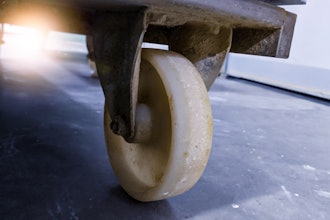
As we grow up, we often get wonderful gifts from mom and dad. Gifts such as intelligence, passion, communication and leadership skills. We also get gifts from different mentors, which can complement the ones from our parents.
As adults, business leaders bring these childhood gifts — or lack thereof — to the companies they lead. And sometimes, a company stops growing when its leader’s gifts are no longer enough to effectively manage the business.
Does your company have the right culture to get things done and thrive? Take the “Dirty Dozen” test to find out. If you answer “yes” to two or more of these questions, you probably need to change your culture.
- Is there a sign in the kitchen reminding employees to clean up after themselves?
- Are there unclean dishes in the kitchen sink?
- Is there blame and excuses for why things are not getting done?
- Is the office/shop unclean?
- Is toilet paper sometimes missing in the bathroom?
- Are the trash cans overflowing?
- Do people frequently show up late to meetings?
- Are people more focused on their cell phones in meetings?
- Do projects tend to run late and over budget?
- Are you constantly being surprised by problems the crop up daily/weekly?
- Do employees sometimes panic when things need to get done?
- Are Performance Reviews (if you have them) ineffective in shaping employee behaviors?
It’s no surprise then that one of the biggest impediments to a healthy business is poor organizational health, which stems from poor leadership. When a culture of blame and excuses permeates a company, it can paralyze it.
In one case, the spouse of a plant manager often asked her husband what he was going to accomplish at work each day. He told her he couldn’t possibly plan because he “had no idea what he was walking into each day.” This uncertainty is almost always a direct result of a lack of leadership.
Poor leadership is a common problem in business today, including in manufacturing. But it can be improved, and a company can thrive if deep-rooted behavioral changes are made. Changing company culture is a huge challenge, partly because it must start at the top. The leadership team must modify its behavior first if they want their employees to follow.
That means moving leaders from their “stress-self” to their “leadership self.” Stress-Self exists when blame and excuses for why things don’t get done permeate a company. Leadership-Self occurs when people are on their game, where good decision-making and measurable achievements are the norm.
Moving from stress-self to leadership-self can be accomplished in four key steps in this leadership model:
Step 1 — Recognize when you are in your stress-self. Realize that negative outcomes often result from blame and excuses for why things can’t get done — and are causing the stress. It is a place where the same things happen over and over but you still expect a different result (the definition of insanity). The ability to identify the behaviors that are leading to poor results is crucial to getting out of your stress-self.
Step 2 — Own the situation and ask these questions:
- What role did I play in the event(s) that led to the negative outcome (self-recognition)?
- What permission or empowerment did I give the other person(s) to do this to me?
To continue reading, please click here.
Steven Shaffer is the president of Shaffer Consulting. More information can be found at www.shafferconsult.com.






















